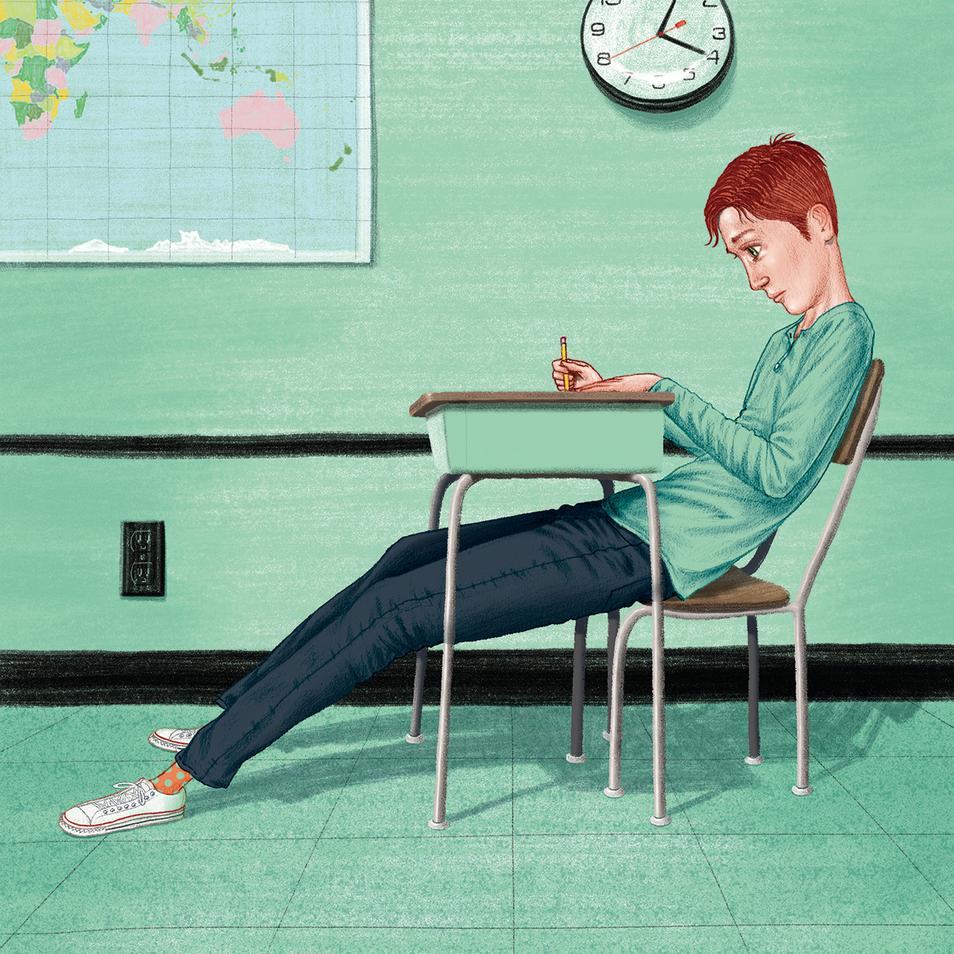Why It Can Help Children to Slouch

ANN Lukits, The Wall Street Journal
Teachers often remind schoolchildren to sit up straight. But a new study suggests that slouching may be a natural posture for children during activities requiring mental effort.
Muscle activity involved in sitting upright significantly decreased when children worked on arithmetic problems in their head compared with a passive control activity, according to a study published online in Occupational Therapy International. Slouching was at its most pronounced when the problems were above the children’s grade level.
Students may have paid less attention to their posture in order to focus on the arithmetic problems, the researchers said. Previous studies have shown that muscle activity involved in standing decreases when a secondary cognitive task is added, they said.
The study involved 28 grade 4 students from Nagoya, Japan. The children sat upright on stools without armrests or backrests during three two-minute exercises presented on a computer.
In two of the exercises, the children verbally solved algebraic equations. One exercise involved easy problems geared toward grade 2 students and another had harder problems suited for grade 5. In the control activity the children watched the computer background. A technique called electromyography measured electrical activity in four muscles in the children’s lower back and spine that are necessary to maintain an upright posture.
The children answered 95% of the easy questions correctly and 65% of the difficult ones. Electrical activity was reduced by about 8% to 18% in three of the four muscles during the math exercises compared with the control activity, but was lowest during the difficult exercise.
Caveat: Muscle activity and postural changes may depend on individual arithmetic abilities, the researchers said. The position of the computer may have affected posture, they said.












